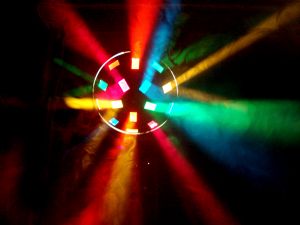Stopping drunk driving is difficult because police cannot pull a motorist over or ask him to submit to a breath or blood test unless the officer has reasonable cause to believe the driver is drunk. Sometimes, it can be difficult to tell a driver is intoxicated as a car passes quickly by. Further, police cannot be everywhere at all times, so not every drunk driver is caught by law enforcement. 
A new technology could make it much easier for law enforcement officers to identify drunk drivers. According to the Huffington Post, this new technology could be “a drunk driver’s worst nightmare.”
When a motor vehicle accident occurs, a toxicology report may be taken to determine if the driver was drunk. If you are a victim of a collision with an impaired driver, a Boston drunk driving accident attorney should be consulted to help you pursue a claim for compensation.
New Technology Could Identify Drunk Drivers
The new technology was developed by scientists in Poland. It is a laser-based device that is able to detect vapor from alcohol, like the vapor that would be exhaled by a person who has had a few drinks. The new device works because subtle changes in the laser beam can be detected as the beam passes through the alcohol vapor. What makes the device unique is that it is able to detect that these vapors exist inside of a car as the vehicle is passing by.
Police already use laser instruments to enforce speed limits, so there is a precedent for using this type of technology to enforce the law. With this new research, a similar technology could be developed in order to detect various chemical components. Devices could be produced that police officers could use not only to check a passing car for alcohol vapors but also to detect other possible chemical compounds that a driver could exhale. This means the technology could be useful not just in preventing drunk driving but also in the fight against drugged driving.
Researchers from the Military University of Technology in Warsaw were able to test the device successfully by aiming the laser at a vehicle that was passing at a distance of as far as 20 meters away. The interior or the vehicle was filled with an alcohol vapor that simulated the exhalations of someone inside of the vehicle who had been drinking.
While the device is in the early stage of development, there are some potential problems that would need to be worked out. Drivers, for example, could take countermeasures such as driving with windows open or with solar screens. However, this would be easily detectable by the system and could tip off an officer that the car should be checked.
One issue that would be difficult to solve is that the device would also detect passengers who had been drinking, and it would be impossible to make the laser work so it only detected vapors from a drunk driver rather than drunk vehicle occupants. Still, the device has potential and could one day help to stop drunk drivers and potentially save lives.
If you or someone you love has been injured a Boston drunk driving accident, call for a free and confidential appointment at (617) 777-7777.
More Blog Entries:
Dangerous Role Models: The Drunk Driving Problem in the NFL, June 3, 2014, Boston Car Accident Lawyer Blog
 Boston Drunk Driving Accident Lawyer Blog
Boston Drunk Driving Accident Lawyer Blog

